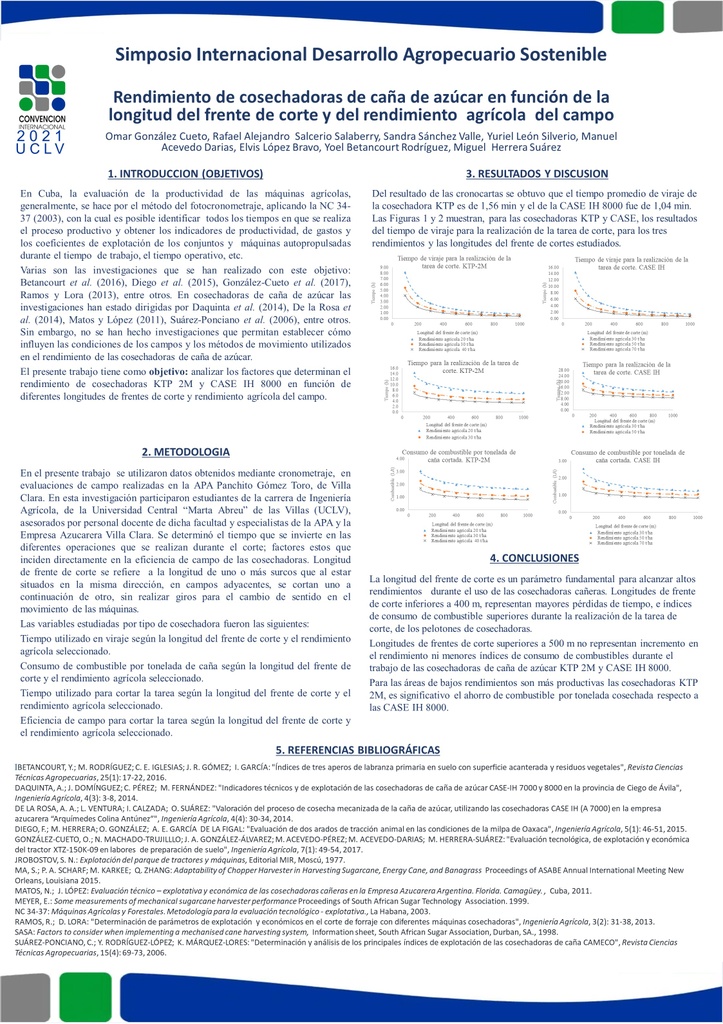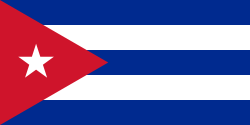Executive Secretary

10th International Scientific Conference on Agricultural Development and SustainabilityAGROCENTRO 2023
Agrocentro 2021

Abstract
The length of the cutting front and the agricultural yield of the fields are factors that affect the throughput capacity of sugar cane harvesters. The present work was carried out in order to determining the throughput capacity of KTP 2M and CASE IH 8000 sugarcane harvesters based on different lengths of cutting fronts. The research was carried out at the Panchito Gómez Toro farm of the Villa Clara Sugar Enterprise, during the 2020 season. The main times that make up the movement within the fields of KTP-2M and CASE IH 8000 sugar cane harvesters were obtained by stopwatch. In addition, the fuel consumption during the work was obtained. The results show that cutting front lengths of less than 300 m represent greater losses of time, and higher fuel consumption rates during the performance of the task of cutting the combine and that cutting front lengths greater than 500 m do not represent an increase in throughput capacity, nor lower fuel consumption rates. KTP sugar cane harvesters are more productive for low-yield areas, given the savings fuel per ton harvested relative to CASE.
Resumen
La longitud del frente de corte y el rendimiento agrícola de los campos son factores que inciden en el rendimiento de cosechadoras de caña de azúcar. El presente trabajo se realizó con el objetivo de determinar el rendimiento de cosechadoras KTP 2M y CASE IH 8000 en función de diferentes longitudes de frentes de corte y del rendimiento agrícola de los campos. La investigación se llevó a cabo en la APA Panchito Gómez Toro de la Empresa Azucarera Villa Clara, durante la zafra 2020. Se obtuvieron mediante fotocronometraje los principales tiempos que componen el movimiento dentro de los campos de cosechadoras KTP-2M y CASE IH 8000. También se obtuvo el consumo de combustible durante la realización de los trabajos. Los resultados muestran que longitudes de frente de corte inferiores a 300 m y los rendimientos agrícolas inferiores, presentan mayores pérdidas de tiempo, e índices de consumo de combustible superiores durante la realización de la tarea de corte de los pelotones de cosechadoras y que longitudes de frentes de corte superiores a 500 m no representan incremento en el rendimiento, ni menores índices de consumo de combustibles. Para las áreas de bajos rendimientos son más productivas las cosechadoras KTP, dado el ahorro de combustible por tonelada cosechada respecto a las CASE.
About The Speaker

Omar González Cueto

Jefe de Departamento de Ingeniería Agrícola
Discussion

